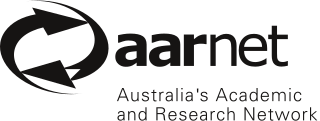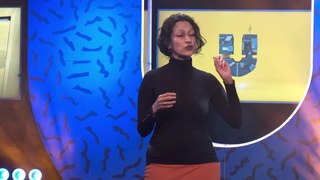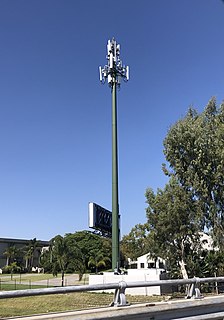
ATLANTIS-2 is a fiber optic transatlantic telecommunications cable connecting Argentina, Brazil, Senegal, Cape Verde, Spain's Canary Islands and Portugal. It is the first submarine cable to link South America and the African continent.

Abilene Network was a high-performance backbone network created by the Internet2 community in the late 1990s. In 2007 the Abilene Network was retired and the upgraded network became known as the "Internet2 Network".

AARNet provides Internet services to the Australian education and research communities and their research partners.
SAT-3/WASC or South Atlantic 3/West Africa Submarine Cable is a submarine communications cable linking Portugal and Spain to South Africa, with connections to several West African countries along the route. It forms part of the SAT-3/WASC/SAFE cable system, where the SAFE cable links South Africa to Asia. The SAT-3/WASC/SAFE system provides a path between Asia and Europe for telecommunications traffic that is an alternative to the cable routes that pass through the Middle East, such as SEA-ME-WE 3 and FLAG. SAT-3 has a capacity of 340 Gbit/s while SAFE has a capacity of 440 Gbit/s. The SAT-3 system together with SAFE was built by a consortium of operators. As of 2006, major investors included Telkom Group, France Telecom (12.08%), Nitel (8.39%); TCI, a subsidiary of AT&T Inc. (12.42%); and VSNL (8.93%).

CANARIE is the not-for-profit organisation which operates the national backbone network of Canada's national research and education network (NREN). The organisation receives the majority of its funding from the Government of Canada. It supports the development of research software tools; provides cloud resources for startups and small businesses; provides access and identity management services; and supports the development of policies, infrastructure and tools for research data management.

The Kiwi Advanced Research and Education Network (KAREN), now known simply as the REANNZ Network, is a high-capacity, ultra high-speed national research and education network (NREN) connecting New Zealand's tertiary institutions, research organisations, libraries, schools and museums, and the rest of the world. REANNZ , a Crown-owned not-for-profit company, owns and operates KAREN.

The Internet in Africa is limited by a lower penetration rate when compared to the rest of the world. Measurable parameters such as the number of ISP subscriptions, overall number of hosts, IXP-traffic, and overall available bandwidth all indicate that Africa is far behind the "digital divide". Moreover, Africa itself exhibits an inner digital divide, with most Internet activity and infrastructure concentrated in South Africa, Morocco, Egypt as well as smaller economies like Mauritius and Seychelles.

The Internet in South Africa, one of the most technologically resourced countries on the African continent, is expanding. The Internet country code top-level domain (ccTLD) .za is managed and regulated by the .za Domain Name Authority (.ZADNA) and was granted to South Africa by the Internet Corporation for Assigned Names and Numbers (ICANN) in 1990. Over 60% of Internet traffic generated on the African continent originates from South Africa. As of July 2016, 29.3 million people were Internet users.

SEACOM launched Africa’s first broadband submarine cable system along the continent’s Eastern and Southern coasts in 2009. SEACOM is privately owned and operated.
The Main One Cable is a submarine communications cable stretching from Portugal to South Africa with landings along the route in various west African countries. On April 28, 2008, it was announced that Main Street Technologies has awarded a turnkey supply contract for the Main One Cable System to Tyco Telecommunications.

South African wireless community networks are wireless networks that allow members to talk, send messages, share files and play games independent of the commercial landline and mobile telephone networks. Most of them use WiFi technology and many are wireless mesh networks. A wireless community network may connect to the public switched telephone network and/or the Internet, but there are various restrictions on connectivity in South Africa. Wireless community networks are particularly useful in areas where commercial telecommunications services are unavailable or unaffordable.

Merit Network, Inc., is a nonprofit member-governed organization providing high-performance computer networking and related services to educational, government, health care, and nonprofit organizations, primarily in Michigan. Created in 1966, Merit operates the longest running regional computer network in the United States.

Broadband is a term normally considered to be synonymous with a high-speed connection to the internet. Suitability for certain applications, or technically a certain quality of service, is often assumed. For instance, low round trip delay would normally be assumed to be well under 150ms and suitable for Voice over IP, online gaming, financial trading especially arbitrage, virtual private networks and other latency-sensitive applications. This would rule out satellite Internet as inherently high-latency. In some applications, utility-grade reliability or security are often also assumed or defined as requirements. There is no single definition of broadband and official plans may refer to any or none of these criteria.
The Ohio Academic Resources Network (OARnet) is a state-funded IT organization that provides member organizations with intrastate networking, virtualization and cloud computing solutions, advanced videoconferencing, connections to regional and international research networks and the commodity Internet, colocation services and emergency web-hosting.
SAex is a proposed submarine communications cable linking South Africa to the United States with branches to Namibia, Saint Helena, and Brazil.

The Tertiary Education and Research Network of South Africa (TENET) is the de facto national research and education network in South Africa.
Pan African e-Network project is an information and communications technology (ICT) project between India and the African Union that seeks to connect the 55 member states of the Union through a satellite and fibre-optic network to India and to each other to enable access to and sharing of expertise between India and African states in the areas of tele-education, telemedicine, Voice over IP, infotainment, resource mapping, meteorological services, e-governance and e-commerce services. The project is often described as Africa's biggest ever in the ICT sector and is expected to extend ICT infrastructure to rural and previously underserved areas. The project is seen as an example of India furthering its economic and strategic interests in Africa through the use of soft diplomacy and has been acclaimed as an instance of South-South cooperation, helping to overcome the digital divide in Africa.

WASACE was a planned system of submarine communications cables consisting of four sections with a total length of 29,000 km linking four continents.
The BRICS Cable is a planned optical fiber submarine communications cable system that carries telecommunications between the BRICS countries, specifically Brazil, Russia, India, China and South Africa. The cable was announced in 2012 but is still under construction as of 2015. The project aims to provide bandwidth around the Southern Hemisphere of the globe, and to "ensure that developing nations’ communications are not all in the hands of the nations of the North".

The Lanka Education and Research Network (LEARN), formerly the Lanka Experimental Academic and Research Network, is a specialized internet service provider dedicated to supporting the needs of the research and education communities within Sri Lanka. The history of the internet in Sri Lanka began with the initial proposal of the 'Lankan Experimental Academic and Research Network' (LEARN) to Sri Lankan government in 1989 by Prof. Abhaya Induruwa. In 1990 the LEARNmail was initiated and the first message was sent over LEARN was from the University of Moratuwa to the University of Colombo. In 1994, wireless links were used to create first Internet Protocol / Wide area network (IP/WAN) in Sri Lanka between University of Colombo, University of Moratuwa and Open University of Sri Lanka. Based on a proposal submitted in 1992 to Sri Lankan government, LEARN connected to the internet in 1995 opening doors to the Internet era in Sri Lanka














